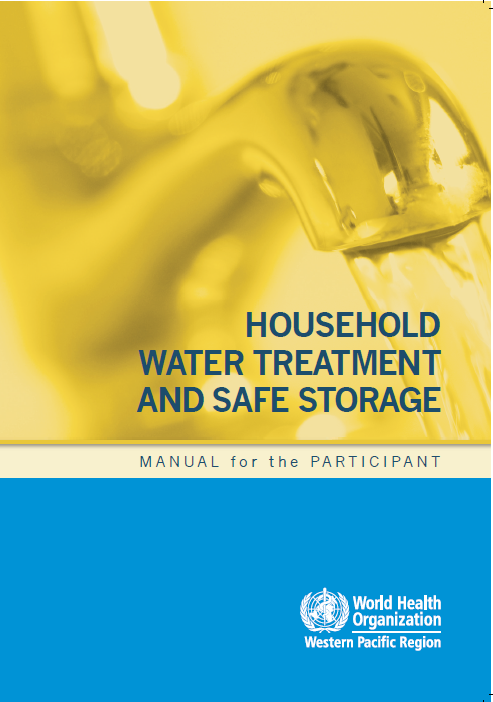GWC Helpdesk
Contact GWC
Household Water Treatment and Safe Storage: Manual for the Participant
The World Health Organization (WHO) estimates that improving water, sanitation and hygiene could prevent at least 9.1% of the global burden of disease and 6.3% of all deaths. Providing safe, reliable, piped-in water to every household is an essential goal, yielding optimal health gains while contributing to the targets for the United Nations Millennium Development Goals (MDGs) for poverty reduction, nutrition, childhood survival, school attendance, gender equity and environmental sustainability. While careful not to encourage diversion of resources away from connected taps, public health officials have called for other approaches that will provide some of the health benefits of safe drinking-water while progress is being made in improving infrastructure. One alternative is household water treatment and safe storage (HWTS). Effective treatment at the household level - often using the same basic approaches of filtration, disinfection and assisted sedimentation - can remove, kill or inactivate most microbial pathogens. Moreover, by focusing at the point of use rather than the point of delivery, treating water at the household level minimizes the risk of recontamination that even improved water supplies can present. This module provides an introduction to HWTS. The module begins by reviewing some of the leading methods for treating water at the household level and the research on their microbiological performance. It then summarizes the evidence concerning the effectiveness and cost-effectiveness of HWTS to prevent diarrhoeal disease. The module ends by noting the major challenges in scaling up HWTS by achieving coverage and sustained uptake among populations that might benefit most from the intervention.